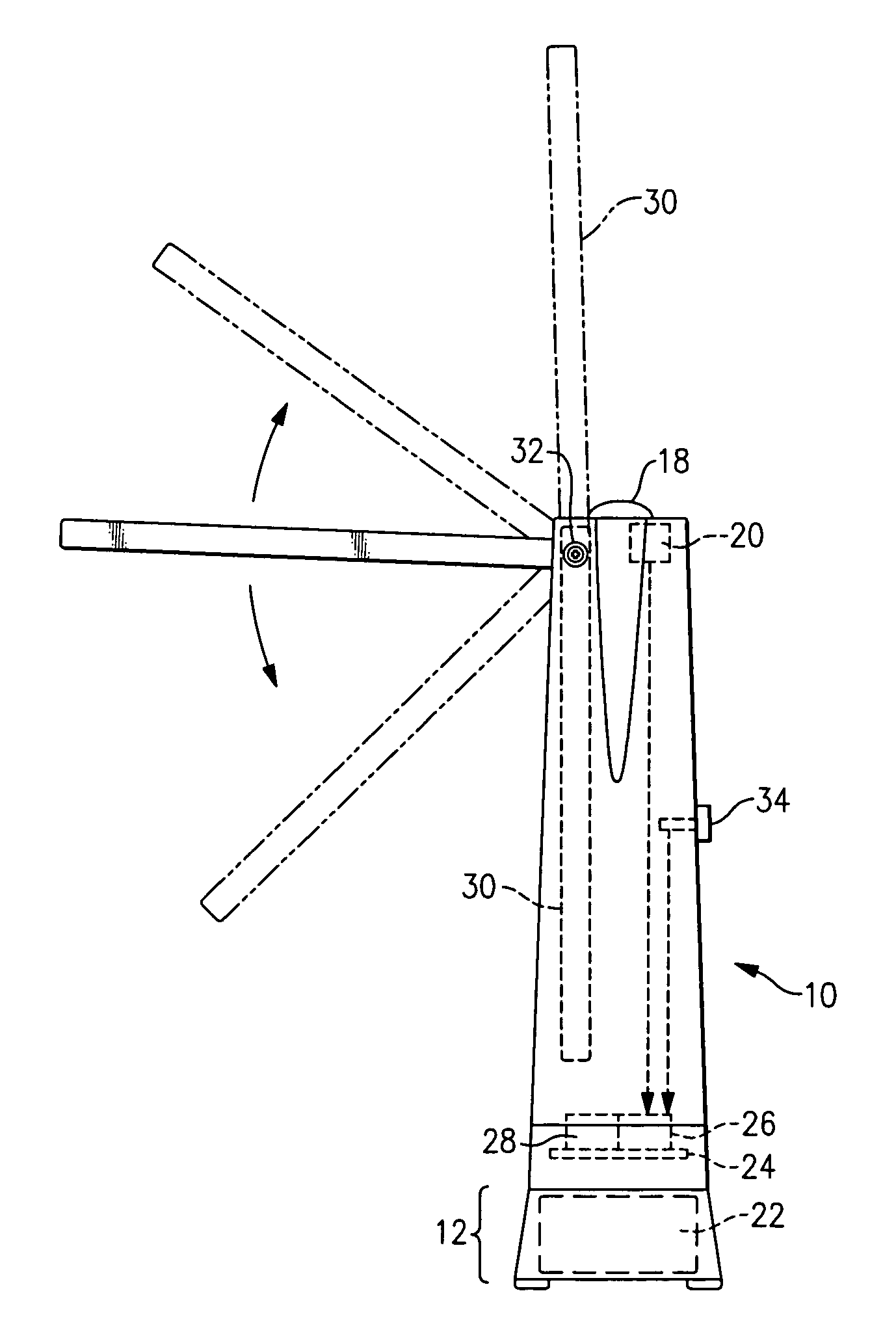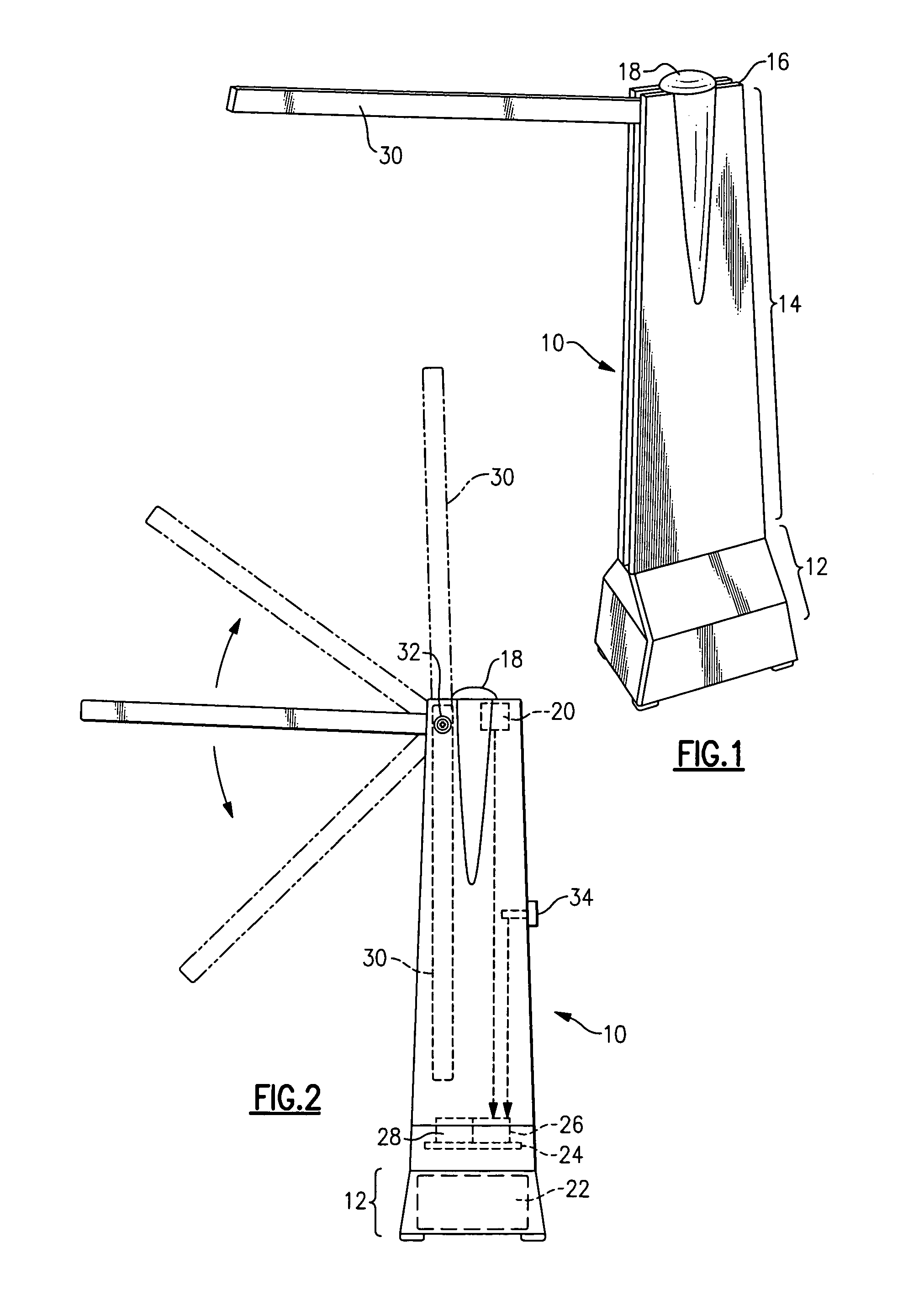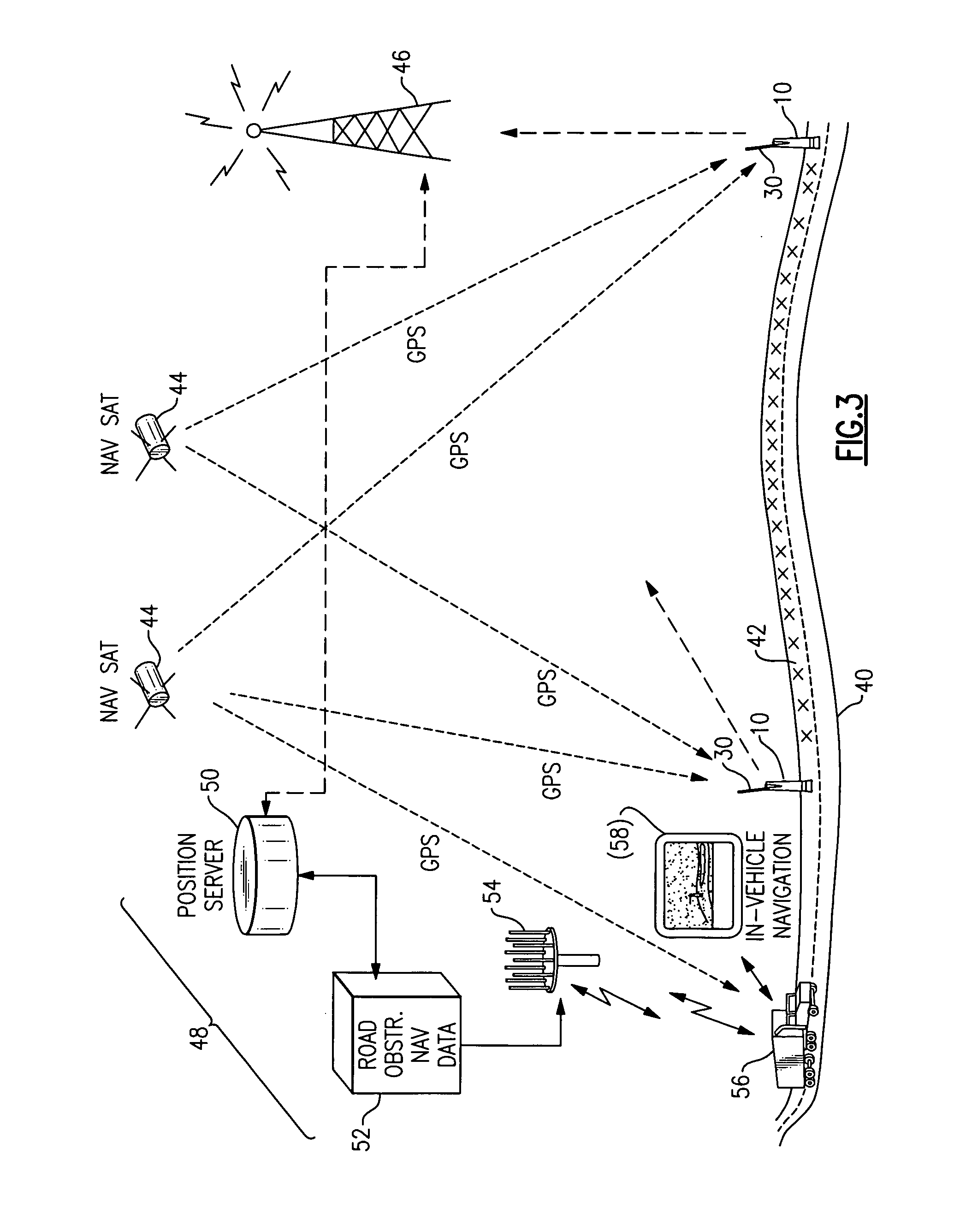Traffic safety pylon with GPS locating and RF signalling
a technology of traffic safety and pylons, applied in the field of intelligent traffic cones or pylons, can solve the problems of no traffic safety cones, time lags, real time traffic flow,
- Summary
- Abstract
- Description
- Claims
- Application Information
AI Technical Summary
Benefits of technology
Problems solved by technology
Method used
Image
Examples
Embodiment Construction
[0015]With reference now to the Drawing, FIG. 1 shows a traffic safety pylon 10 or traffic cone, which has a base 12 at its lower end for resting on a roadway surface, and a body portion 14 that rises upward from the base 12 to a top 16. Within a dome 18 at the top is located a GPS receiver 20 (see FIG. 2). Placed here at the dome 18, the GPS receiver 20 will have the best view of the sky to receive the navigation signals from a constellation of navigation satellites. As the satellites orbit past again and again, the location information for the pylon becomes more and more fine-tuned, i.e., the accuracy of the data becomes better. The resolution of the location data in a short while reaches about one-half the width of a lane of traffic. This allows the pylon 10 to identify fairly precisely the end of the traffic lane where it has been placed, and to identify the specific lane of a multi-lane highway where the traffic obstruction exists.
[0016]A battery 22 is mounted within the base 1...
PUM
 Login to View More
Login to View More Abstract
Description
Claims
Application Information
 Login to View More
Login to View More - R&D
- Intellectual Property
- Life Sciences
- Materials
- Tech Scout
- Unparalleled Data Quality
- Higher Quality Content
- 60% Fewer Hallucinations
Browse by: Latest US Patents, China's latest patents, Technical Efficacy Thesaurus, Application Domain, Technology Topic, Popular Technical Reports.
© 2025 PatSnap. All rights reserved.Legal|Privacy policy|Modern Slavery Act Transparency Statement|Sitemap|About US| Contact US: help@patsnap.com



